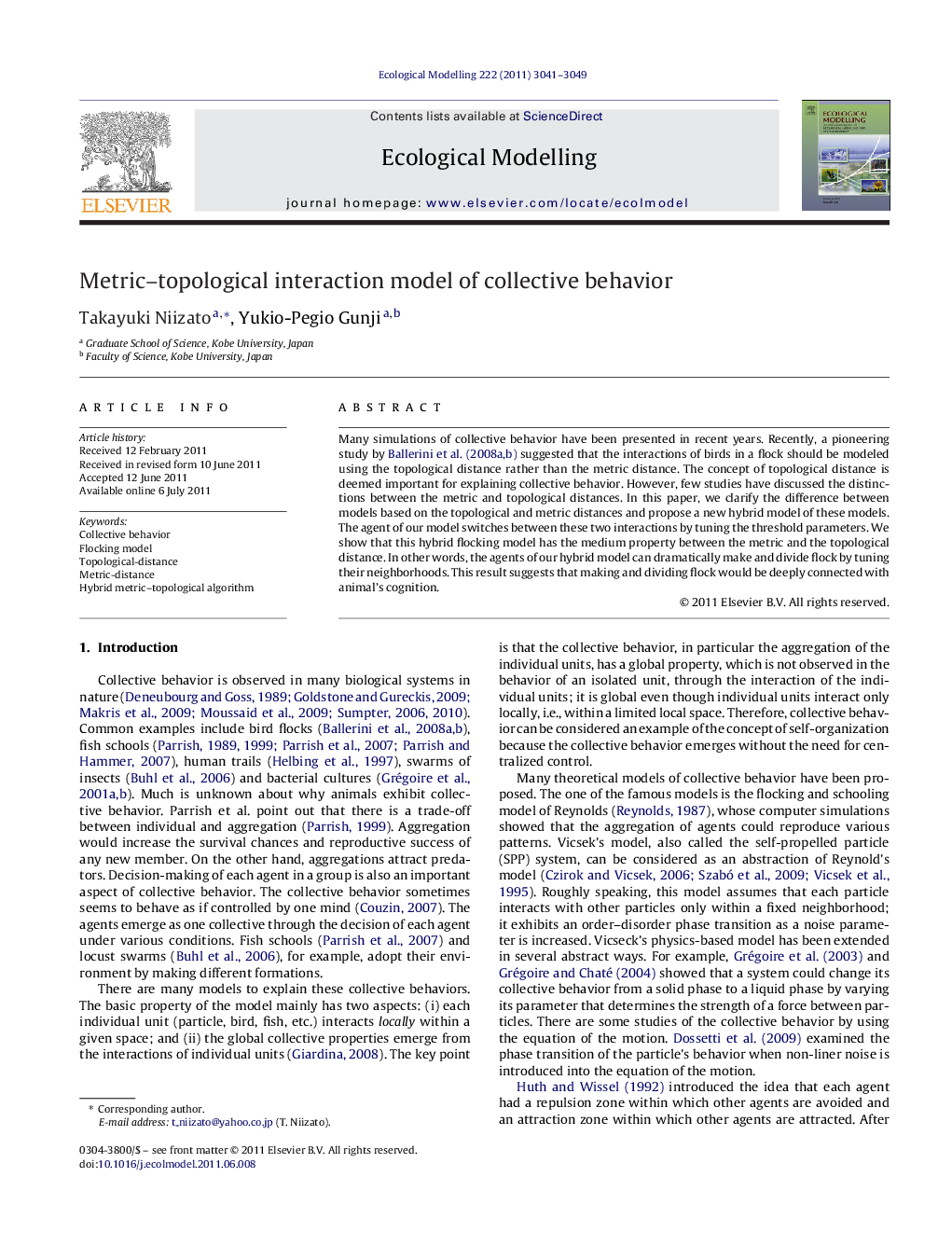| Article ID | Journal | Published Year | Pages | File Type |
|---|---|---|---|---|
| 4376665 | Ecological Modelling | 2011 | 9 Pages |
Many simulations of collective behavior have been presented in recent years. Recently, a pioneering study by Ballerini et al., 2008a and Ballerini et al., 2008b suggested that the interactions of birds in a flock should be modeled using the topological distance rather than the metric distance. The concept of topological distance is deemed important for explaining collective behavior. However, few studies have discussed the distinctions between the metric and topological distances. In this paper, we clarify the difference between models based on the topological and metric distances and propose a new hybrid model of these models. The agent of our model switches between these two interactions by tuning the threshold parameters. We show that this hybrid flocking model has the medium property between the metric and the topological distance. In other words, the agents of our hybrid model can dramatically make and divide flock by tuning their neighborhoods. This result suggests that making and dividing flock would be deeply connected with animal's cognition.
► We propose the flocking model is consisted of two ways of interaction. ► This model shows intermediate property between these two ways of interaction. ► The agents of our model can make flocks more dynamically in the limited condition. ► We concluded adjusting agent's neighborhood is essential for the collective behavior.
